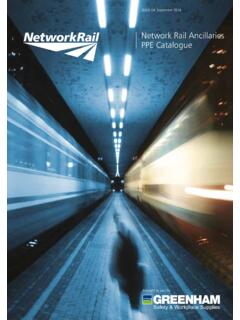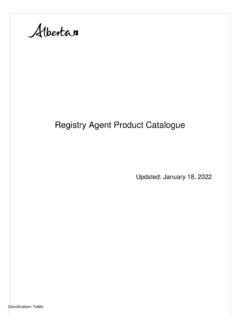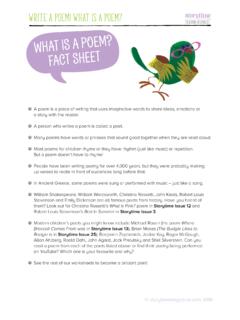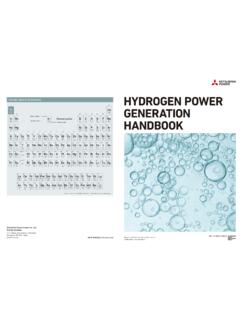Transcription of Perkins 4.236 Series
1 IPerkins SeriesModels , , , S HANDBOOK4 cylinder diesel engines for automotive, agricultural and industrial usePublication TPD 1291E, issue 2. Proprietary information of Perkins Engines Company Limited, all rights information is correct at the time of in 1998 by Technical Publications, Perkins Engines Company Limited, Peterborough PE1 5NA EnglandThis document has been printed from SPI . Not for Resale iiThis publication is written inPerkins Approved Clear EnglishThis publication is divided into six chapters:1 General information2 Engine views3 Operation instructions4 Preventive maintenance5 Engine fluids6 Fault diagnosisThe following pages contain a detailed table of contentsThis document has been printed from SPI.
2 Not for ResaleUser s Handbook, TPD 1291E, issue SeriesContents1 General informationIntroduction .. 1 Safety precautions .. 2 How to care for your engine .. 3 Engine preservation ..4 Parts and service .. 5 POWERPART consumable products .. 6 Engine identification .. 8 Engine data .. 92 Engine viewsIntroduction .. 11 Location of engine parts .. 113 Operation instructionsHow to start the engine .. 13 How to start a warm engine .. 14 How to start a cold engine without starting aids .. 15 How to start a cold engine with the fuelled starting aid.
3 16 This document has been printed from SPI . Not for ResaleivUser s Handbook, TPD 1291E, issue SeriesHow to start a cold engine with manually operated ptart pilot .. 17 How to start a cold engine with KBi or electrically operated start pilot .. 18 How to stop the engine .. 19 Adjustment of engine speed range .. 19 Running-in .. 19 Turbocharged engines .. 20 Altitude .. 204 Preventive maintenancePreventive maintenance periods .. 21 Schedules .. 22 How to drain the cooling system .. 23 How to check the drive belt(s).
4 24 How to clean the gauze strainer of the fuel lift pump .. 25 Fuel pre-filter .. 26 How to renew the element of the fuel filter .. 26 Atomiser fault .. 27 How to renew an atomiser .. 28 How to eliminate air from the fuel system .. 29 How to renew the lubricating oil .. 33 How to renew the canister of the lubricating oil filter .. 34 Air cleaner .. 35 Air filter .. 36 Restriction indicator .. 37 How to clean the engine breather valve .. 38 How to check the valve tip clearances .. 39 This document has been printed from SPI.
5 Not for ResaleUser s Handbook, TPD 1291E, issue Series5 Engine fluidsFuel specification ..41 Lubricating oil specification .. 42 Coolant specification ..436 Fault diagnosisProblems and possible causes .. 45 Code list of possible causes .. 46 This document has been printed from SPI . Not for ResaleviThis page is intentionally blankThis document has been printed from SPI . Not for ResaleUser s Handbook, TPD 1291E, issue SeriesGeneral information1 IntroductionThe Series is a family of automotive, industrial and agricultural engines with power outputs from 76,0 to 37,5 kW (102,0 to 50,5 bhp).
6 More than sixty years of diesel production experience, together with the latest technology, have been applied to the manufacture of your engine to give you reliable and economic ensure that you use the relevant information for your specific engine type, refer to "Engine identification" on page document has been printed from SPI . Not for Resale1 2 User s Handbook, TPD 1291E, issue SeriesSafety precautionsThese safety precautions are important. You must refer also to the local regulations in the country of use. Some items only apply to specific use these engines in the type of application for which they have been not change the specification of the not smoke when you put fuel in the away fuel which has been spilt.
7 Material which has been contaminated by fuel must be moved to a safe not put fuel in the tank while the engine runs (unless it is absolutely necessary).zDo not clean, add lubricating oil, or adjust the engine while it runs (unless you have had the correct training; even then extreme caution must be used to prevent injury).zDo not make adjustments that you do not that the engine does not run in a location where it can cause a concentration of toxic persons must be kept at a safe distance while the engine or equipment is in not permit loose clothing or long hair near moving !
8 Keep away from moving parts during engine fan cannot be seen clearly while the engine not operate the engine if a safety guard has been not remove the filler cap or any component of the cooling system while the engine is hot and while the coolant is under pressure, because dangerous hot coolant can be not use salt water or any other coolant which can cause corrosion in the closed cooling not allow sparks or fire near the batteries (especially when the batteries are on charge) because the gases from the electrolyte are highly flammable.
9 The battery fluid is dangerous to the skin and especially to the the battery terminals before a repair is made to the electrical one person must control the that the engine is operated only from the control panel or from the operator's your skin comes into contact with high-pressure fuel, obtain medical assistance fuel and lubricating oil (especially used lubricating oil) can damage the skin of certain persons. Protect your hands with gloves or a special solution to protect the not wear clothing which is contaminated by lubricating oil.
10 Do not put material which is contaminated with oil into the used lubricating oil in accordance with local regulations to prevent not move mobile equipment if the brakes are not in good that the control lever of the transmission drive is in the "out-of-drive" position before the engine is extreme care if emergency repairs must be made at sea or in adverse combustible material of some components of the engine (for example certain seals) can become extremely dangerous if it is burned. Never allow this burnt material to come into contact with the skin or with the not allow compressed air to contact your skin.







